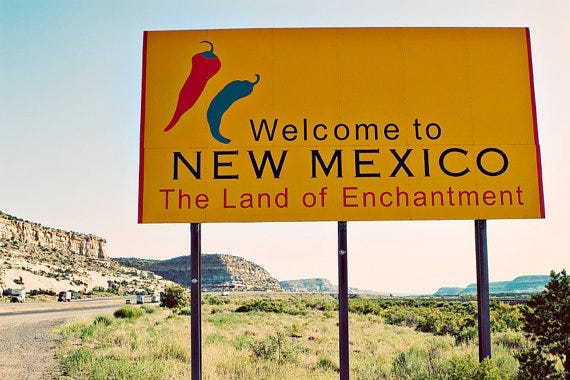The Enchanted State: how New Mexico legalized psilocybin therapy
How did it happen, and what are the lessons for other campaigns?
This is the first installment in an occasional series I’m going to write called Altered States, each one focused on how the psychedelic renaissance is shaping and being shaped by a particular state in the USA. First up, New Mexico! I’m making it free for a month but do subscribe if you can afford it, to support my work.
Last year, the attention of psych…
Keep reading with a 7-day free trial
Subscribe to Ecstatic Integration to keep reading this post and get 7 days of free access to the full post archives.


